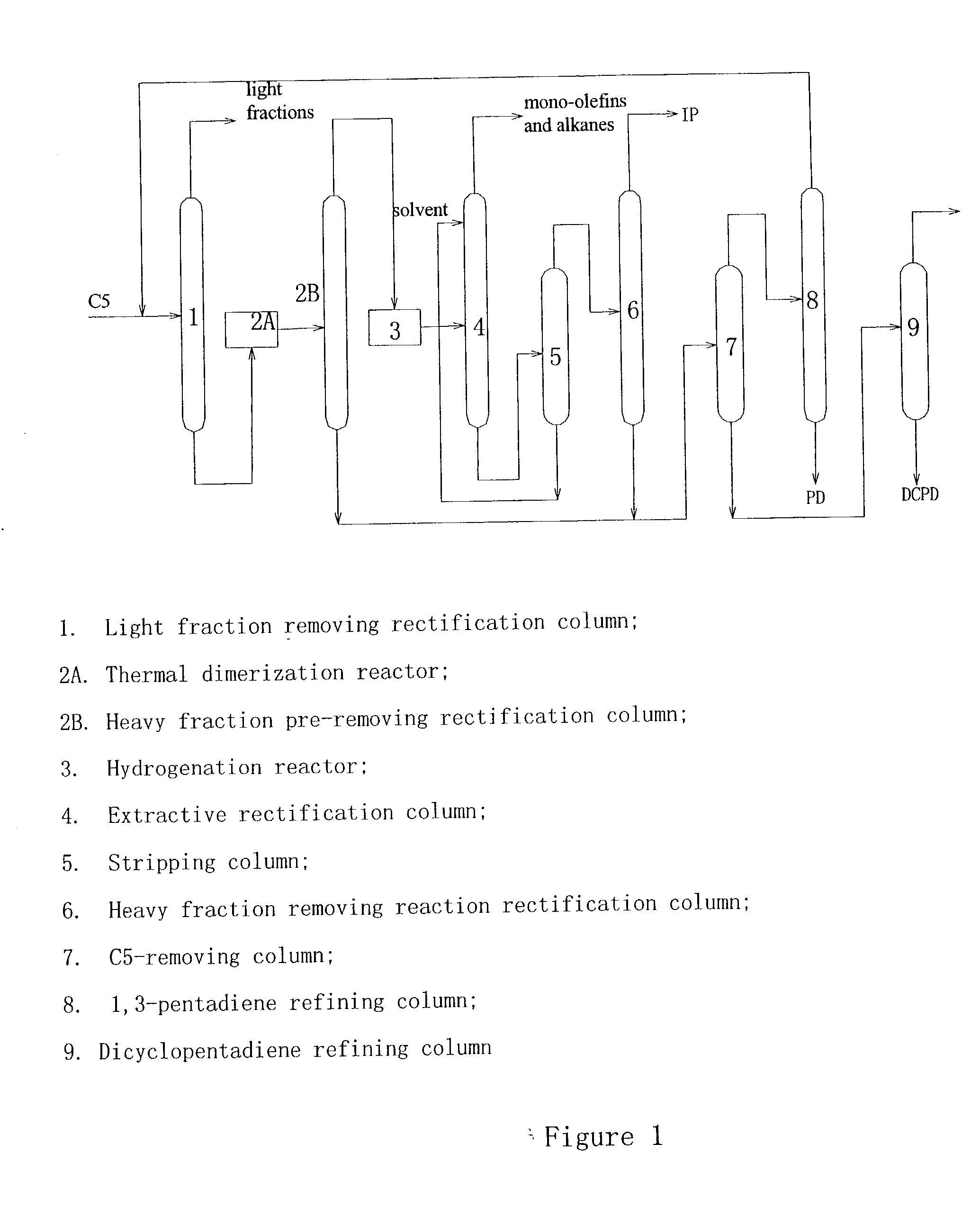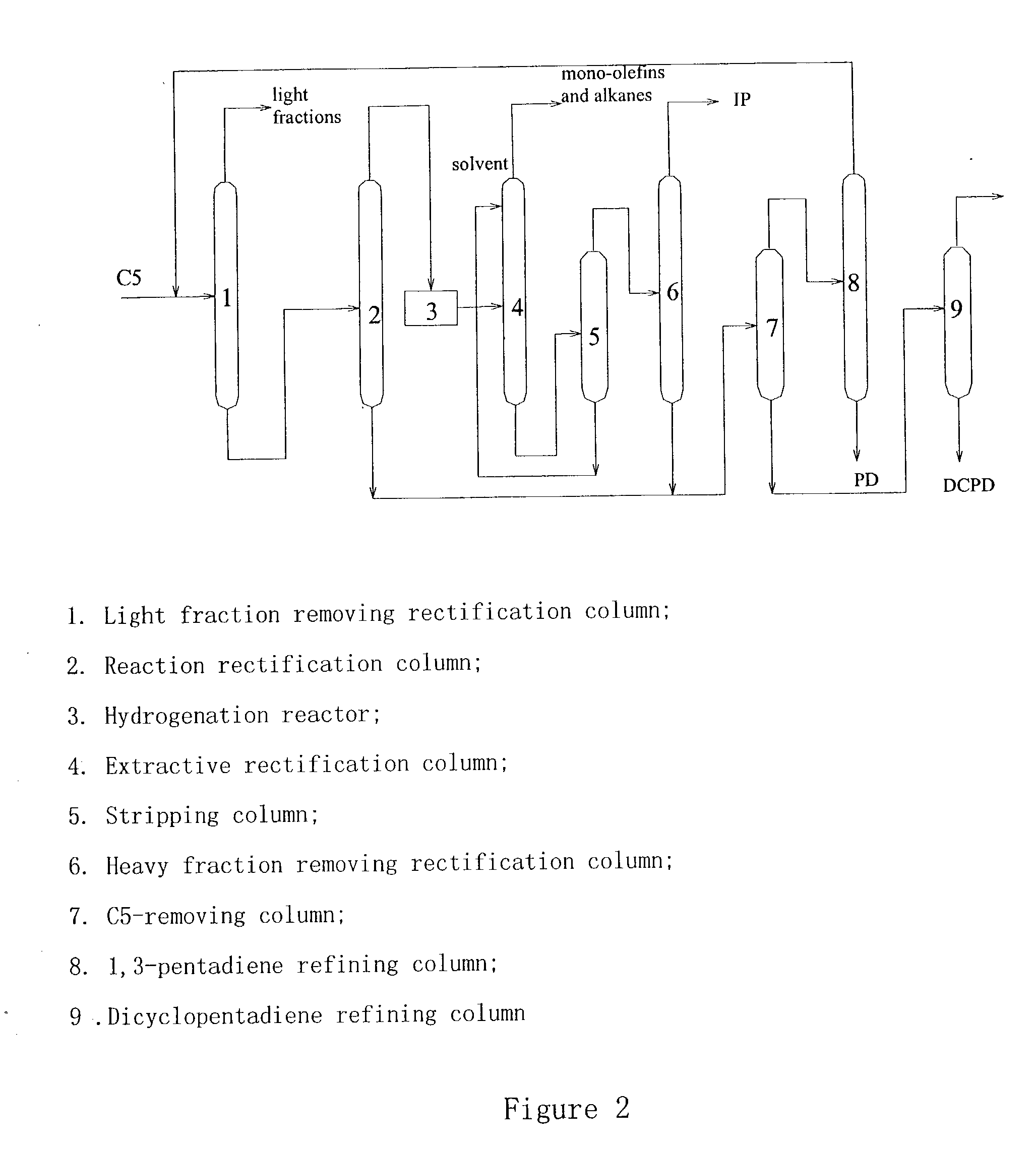Process for separating C5 cuts obtained from a petroleum cracking process
a technology of cracking process and c5 cuts, which is applied in the direction of extraction purification/separation, azeotropic/extractive distillation, organic chemistry, etc., can solve the problems of high consumption, complex process, and high risk of operation
- Summary
- Abstract
- Description
- Claims
- Application Information
AI Technical Summary
Benefits of technology
Problems solved by technology
Method used
Image
Examples
example 1
Preparation of catalyst-1
[0062] 30 g of aluminum oxide as the support (the specific surface area measured by the BET method is 287 m.sup.2 / g) was impregnated with a mixture of 0.18% (by weight of copper) aqueous copper nitrate solution and a 0.2% (by weight of silver) aqueous silver nitrate solution, which mixture had been previously regulated to a volume of 22.5 ml and a pH of 1.0 using nitric acid and water, dried at 120.degree. C. for 4 hours, calcined at 500.degree. C. for 4 hours, and then cooled down to room temperature. Then the resulting support was impregnated with a 0.2% (by weight of palladium) aqueous palladium nitrate solution (also regulated to a volume of 22.5 ml and a pH of 1.0 using nitric acid and water), dried and calcined as above, and cooled to the room temperature. The resulting support was impregnated with a 2% (by weight of potassium) aqueous potassium hydroxide solution, dried and calcined as above. The above solutions were used at such an amount that the ob...
example 2
Preparation of Catalyst-2
[0064] This example was carried out as in Example 1, except that the solutions were used at such an amount that the resulting catalyst contained 6% of copper, 0.03% of silver, 0.06% of palladium and 0.6% of potassium.
[0065] The resulting catalyst was referred to as Cat.2.
example 3
Preparation of Catalyst-3
[0066] This example was carried out as in Example 1, except that the solutions were used at such an amount that the resulting catalyst contained 3% of copper, 0.03% of silver, 0.03% of palladium and 0.3% of potassium.
[0067] The resulting catalyst was referred to as Cat.3.
PUM
| Property | Measurement | Unit |
|---|---|---|
| temperature | aaaaa | aaaaa |
| temperature | aaaaa | aaaaa |
| temperature | aaaaa | aaaaa |
Abstract
Description
Claims
Application Information
 Login to View More
Login to View More - R&D
- Intellectual Property
- Life Sciences
- Materials
- Tech Scout
- Unparalleled Data Quality
- Higher Quality Content
- 60% Fewer Hallucinations
Browse by: Latest US Patents, China's latest patents, Technical Efficacy Thesaurus, Application Domain, Technology Topic, Popular Technical Reports.
© 2025 PatSnap. All rights reserved.Legal|Privacy policy|Modern Slavery Act Transparency Statement|Sitemap|About US| Contact US: help@patsnap.com


